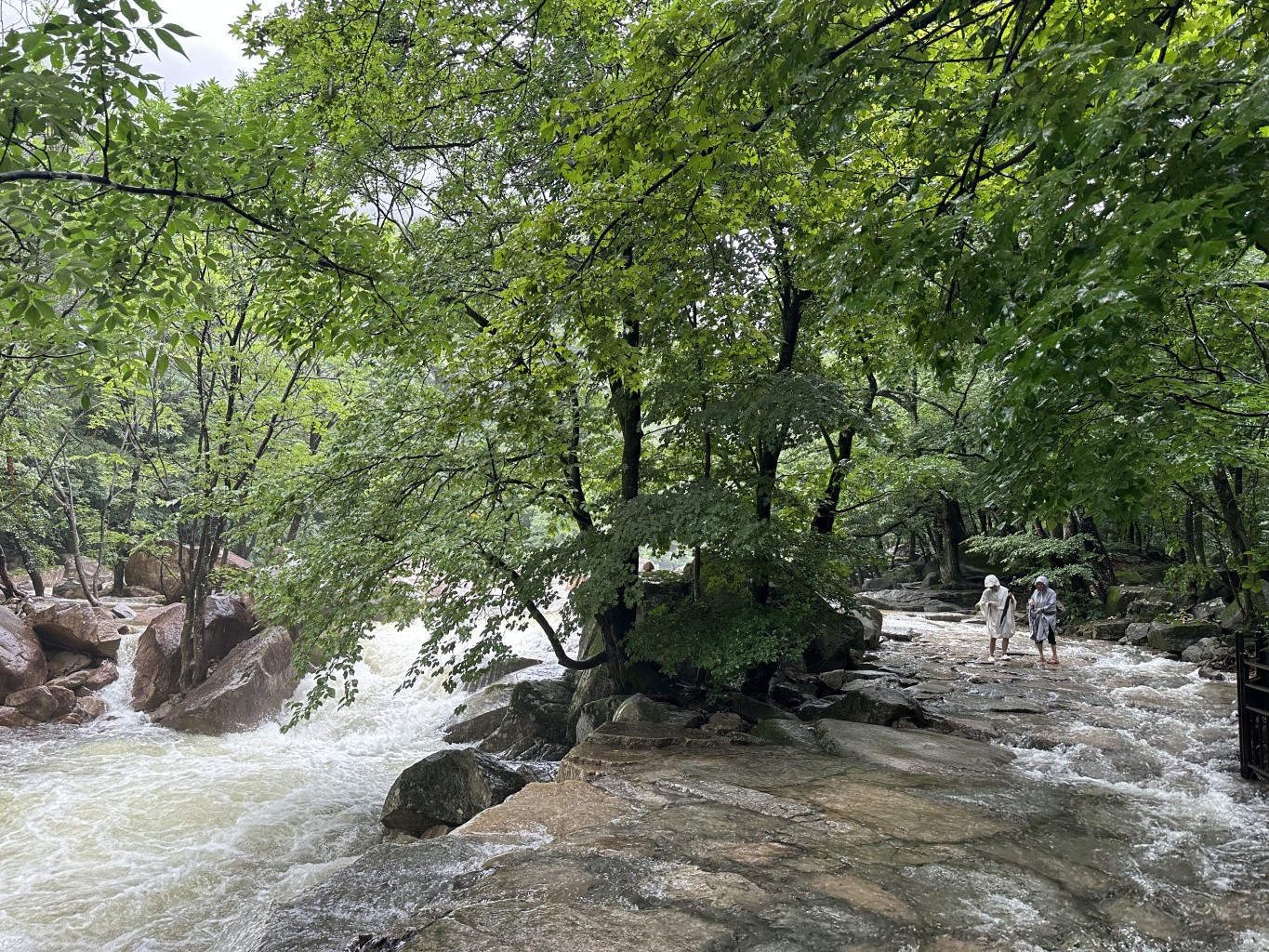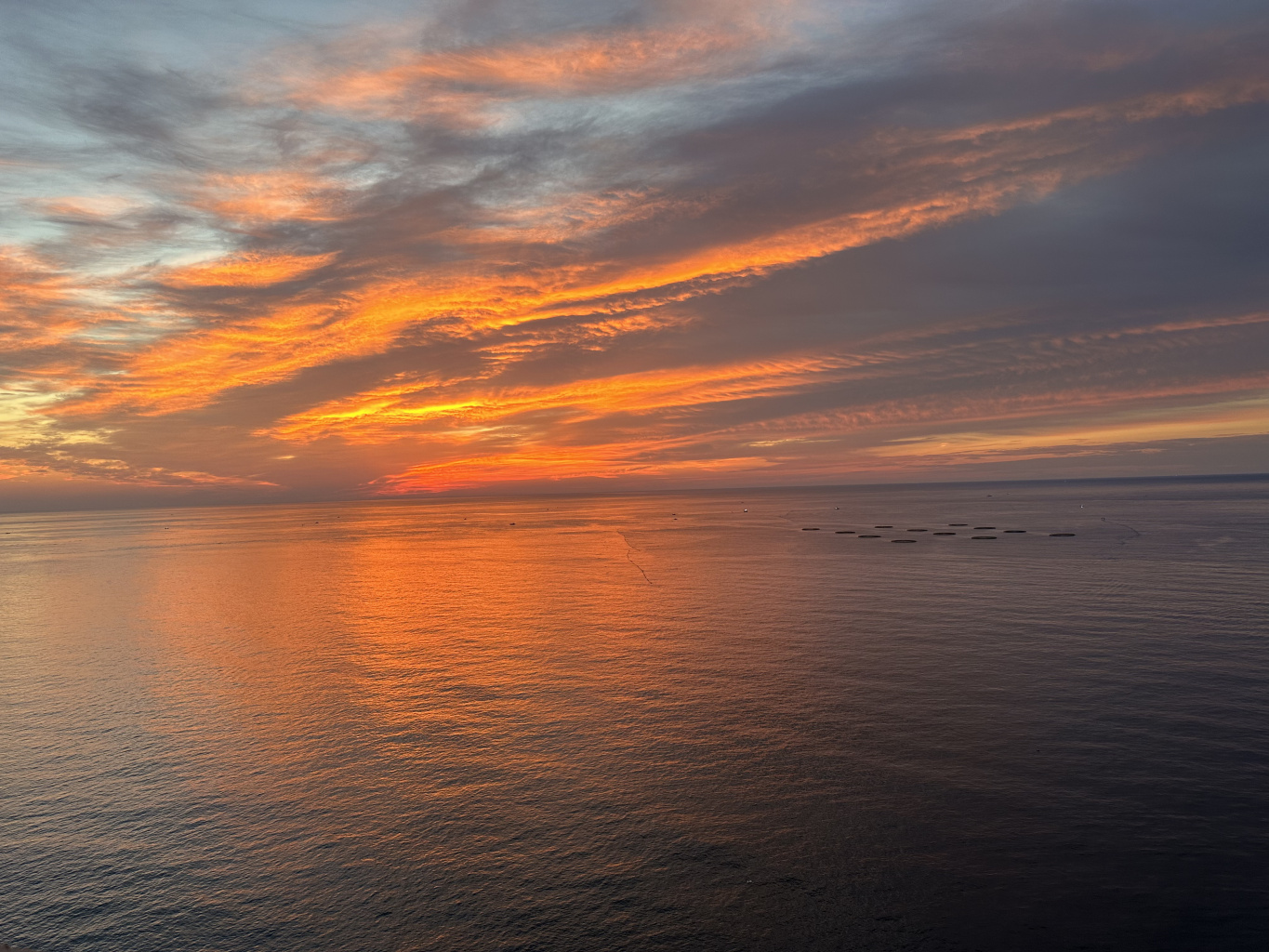Our recommendation to travelers going to South Korea and dreaming of seeing something similar to the secluded nature from the South Korean drama film Spring, Summer, Fall, Winter... and Spring, is to go not to Seoul that is popular with tourists. One cannot not find an idyll in the metropolis. To get acquainted with the beautiful pristine nature of the Land of the Morning Calm, it’s better to go to the Seoraksan National Park where tourists can see both the amazing mountains and the sea. The park is not far from the city of Sokcho located on the coast of the East Sea. The National Park is just a twenty-minute drive from the city by public transport (one should take bus No. 7 or No. 7.1 to get there).
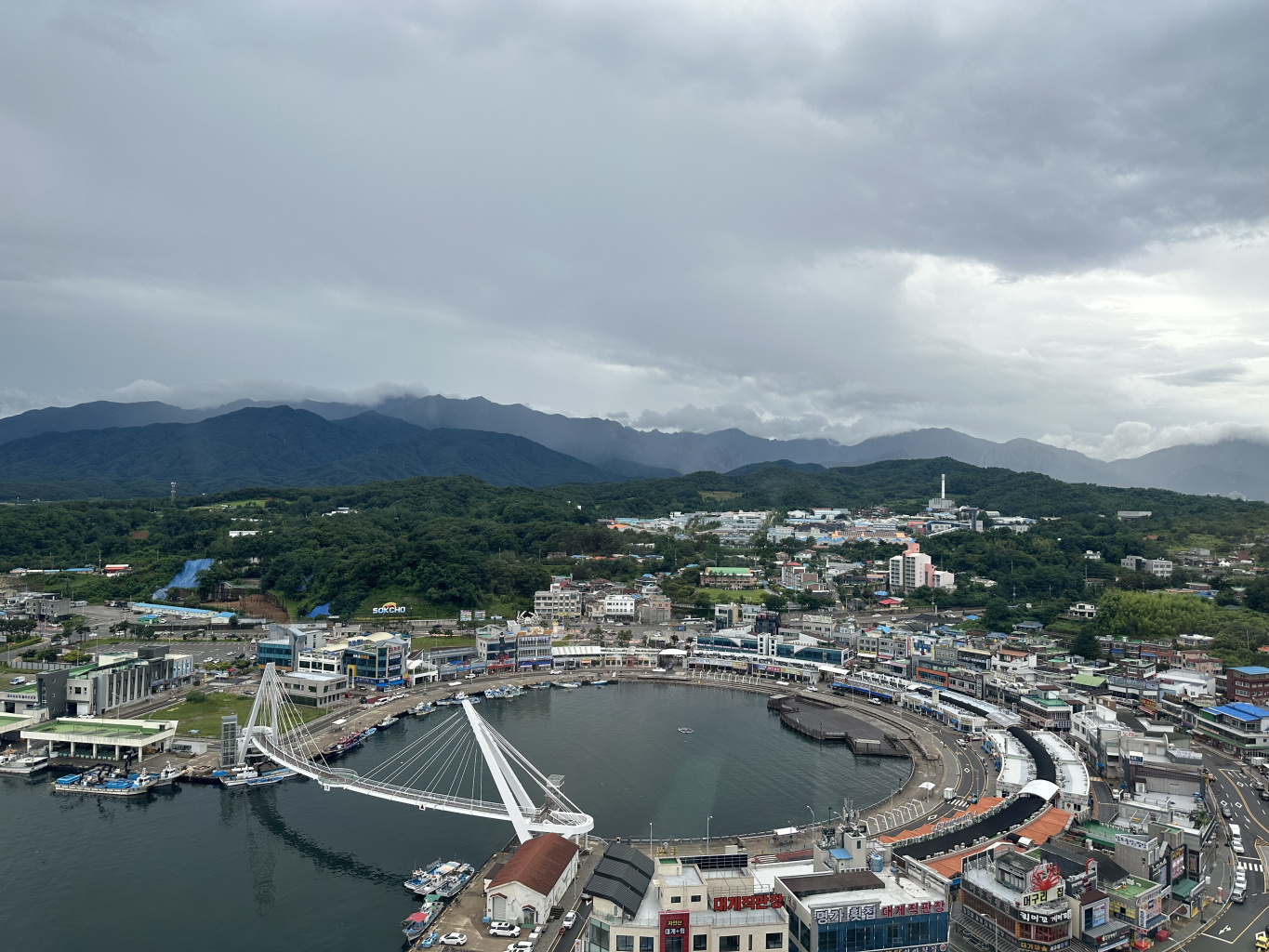
It is noteworthy that in South Korea, people are fond of gardening, so there are many greenhouses, and various plants and vegetables grow well in small fields and many land plots on hillsides. It seems that the Koreans use every inch of land to grow something useful. The same is true for Sokcho that used to be a fishing village and is now a large resort city. In the center of Sokcho, vegetable beds are made near every tiny house to grow onions, cherry tomatoes, sprawling zucchini, and mallow, which many people love since childhood. When you go by bus from the city a little further from the sea, you can see one village after another from the bus window, and rice fields, as well as areas where corn and vegetables are grown.
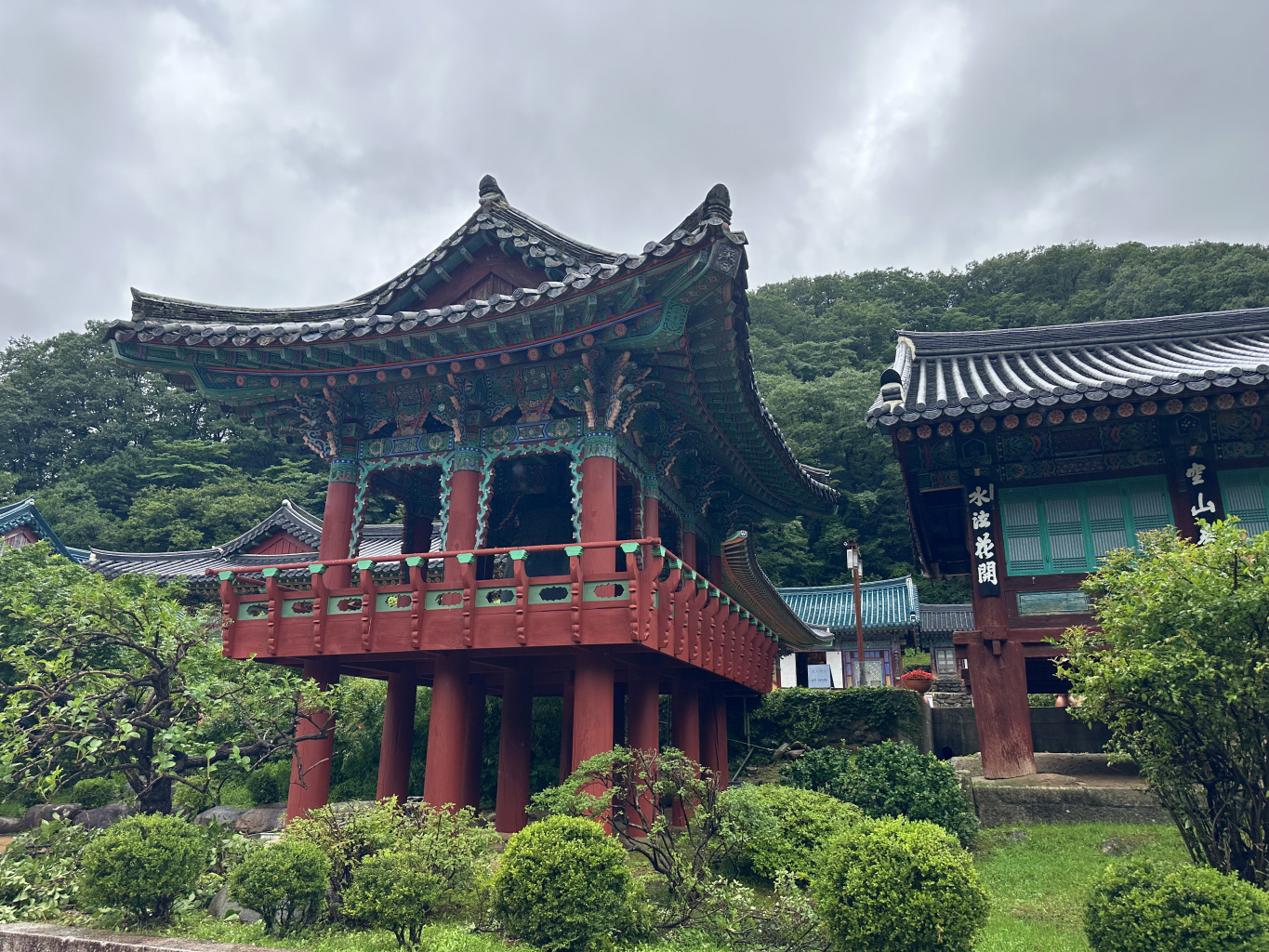
The Seoraksan National Park is quite large. There are pagodas and a huge Buddha statue at its entrance. Near the Buddha statue, people sell rice for offerings, as well as candles and black clay tablets (the size of an A4 sheet), on which one can write a request or wish in chalk and leave it at the statue. The wish for Peace throughout the world is written most often and in different languages.
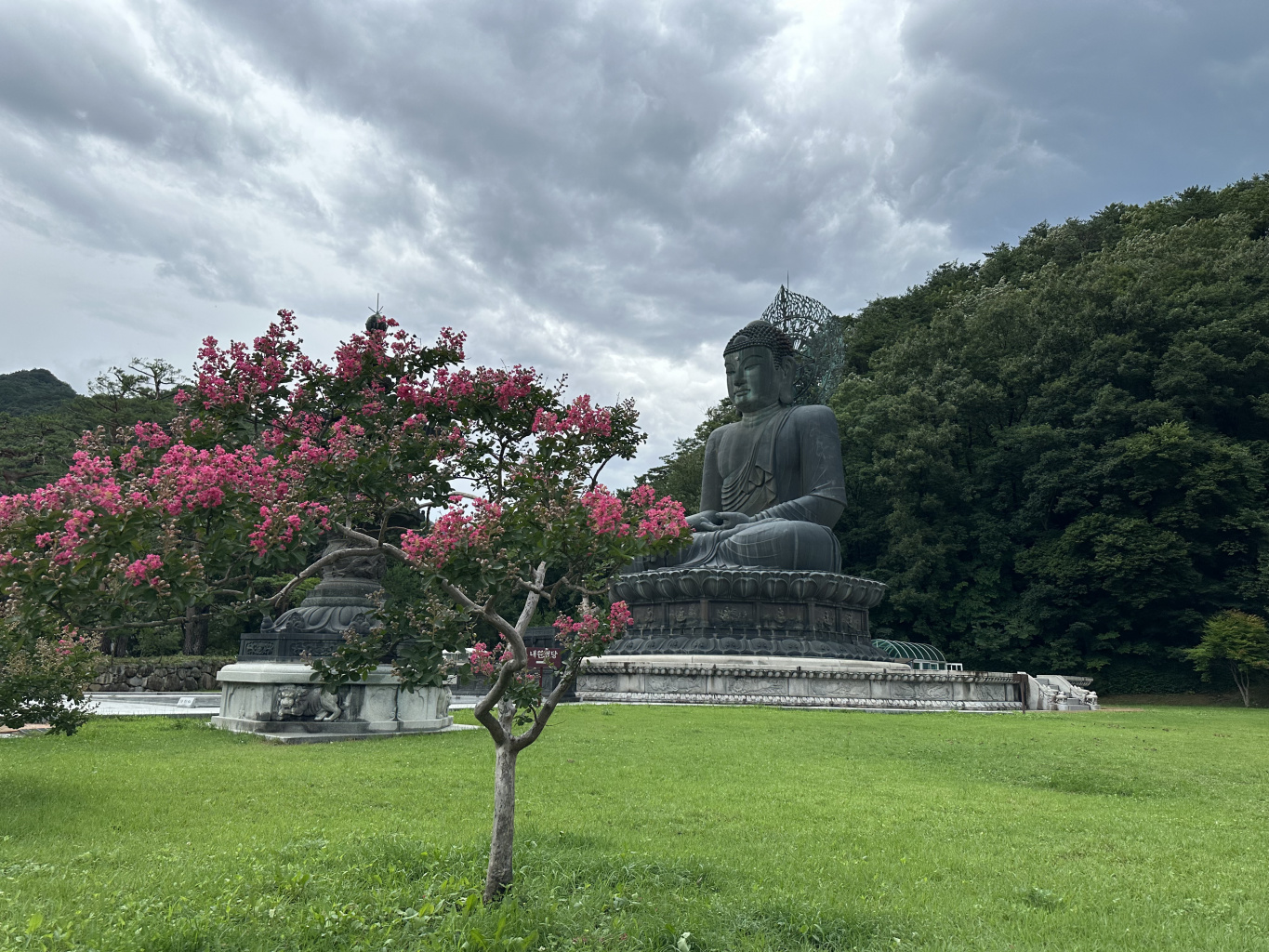
We must give credit to the Koreans because the infrastructure of the Seoraksan National Park is well-designed, everything is marked, fitted with signs, the paths are well-kept, the stairs have safe railings, and the steps are covered with rubberized perforated flooring to be not slippery in wet weather. And it is very humid in Korea. Both the air and the surface are humid even when it’s not raining, and huge boulders are covered with moss and there is water in any depression. Perhaps, due to humidity, it seems that the mountains are ‘supernaturally’ green. By the way, oak (Chinese cork oak) and pine (Korean red pine) compete for the first place among the trees in Korea. There are maples between these trees with small sharp leaves (Korean maple and other varieties) that form the multi-colored beauty of the mountains in the fall - in tourist guides, it is recommended to come to the Seoraksan National Park in October to admire the stunning autumn trees. But we were there in July, so we enjoyed the green beauty.

Some tourists prefer to stay at the hotel located nearby to enjoy the amazing mountain views and hiking that is very popular in Korea. We had time to explore only two routes out of all the possible ones, but they were amazing ones!
In Seoraksan, the tourists who are fond of hiking along mountain trails have a choice – they can go by cable way (covering part of the way) to the highest peak of 1,700 meters (Daecheongbong Peak), or walk the entire way. They can also choose one of the shorter routes. The weather helped us make our choice because the car way was not working due to the strong wind and there was no time to take the most difficult trail, so we went from the entrance to the right - to the Ulsanbawi Rock.
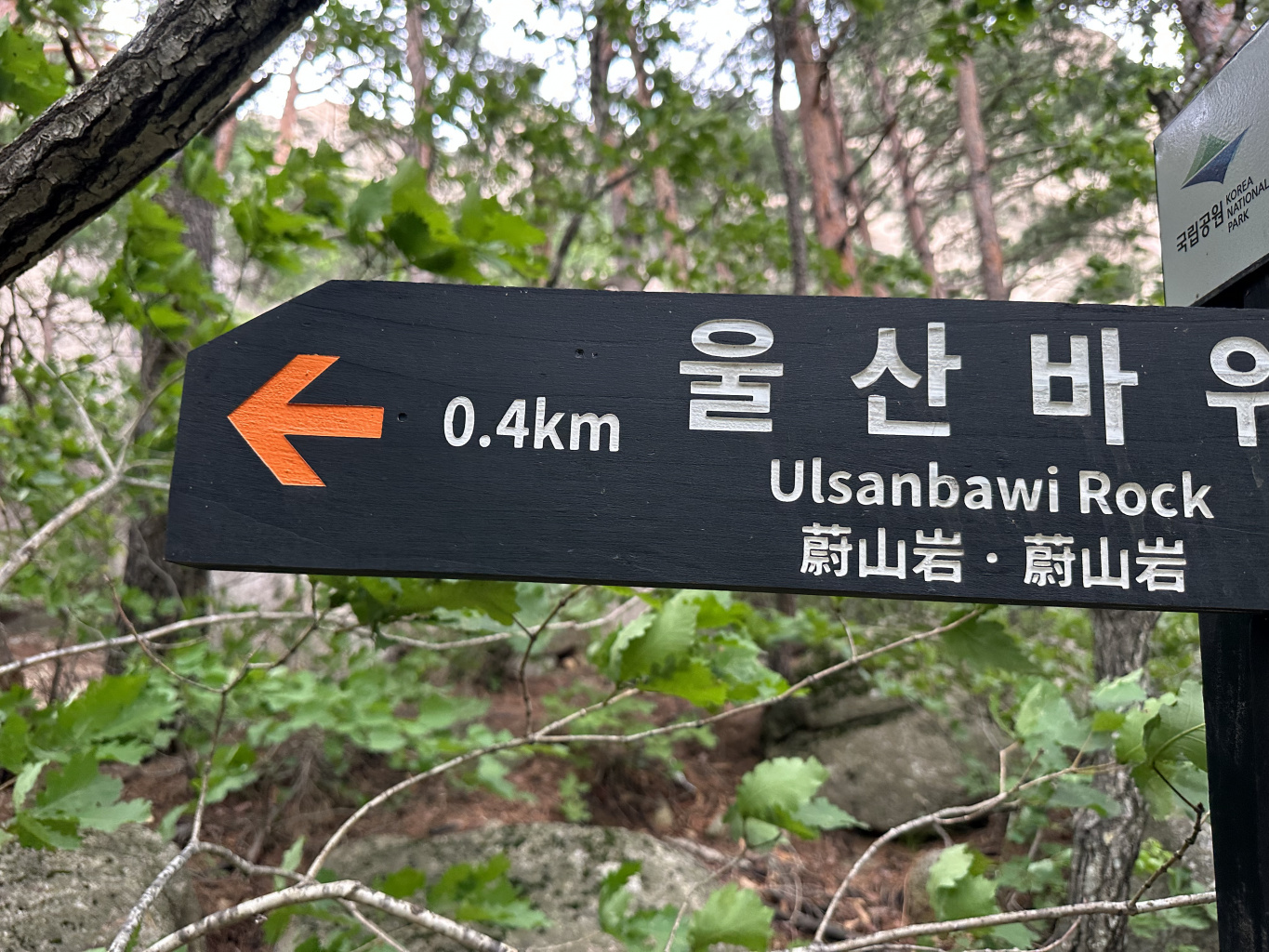
The higher we climbed, the stronger the wind was. When we approached to the top of the mount, the wind was knocking us off our feet and we had to hold our cameras tightly. Later, we were surprised how the cautious Koreans who usually make a lot of restrictions left the entrance to the top of the Ulsanbawi Rock open that day, because such a wind, especially in the mountains, can really be called extreme.
The Ulsanbawi Rock has an unusual shape with its peaks without any vegetation looking like rounded streamlined spires reminiscent of a glazed sand castle. At the top, it was windy and we were pleasantly surprised because from two viewing platforms, the greenest mountains and the sea opened up! This view is magnificent and inspiring! On our way back, we were surprised again at the foot of the mountain because there was a picturesque nook of the park hidden from the tourists where we discovered painted pagodas and a water spring - it was a real oasis.
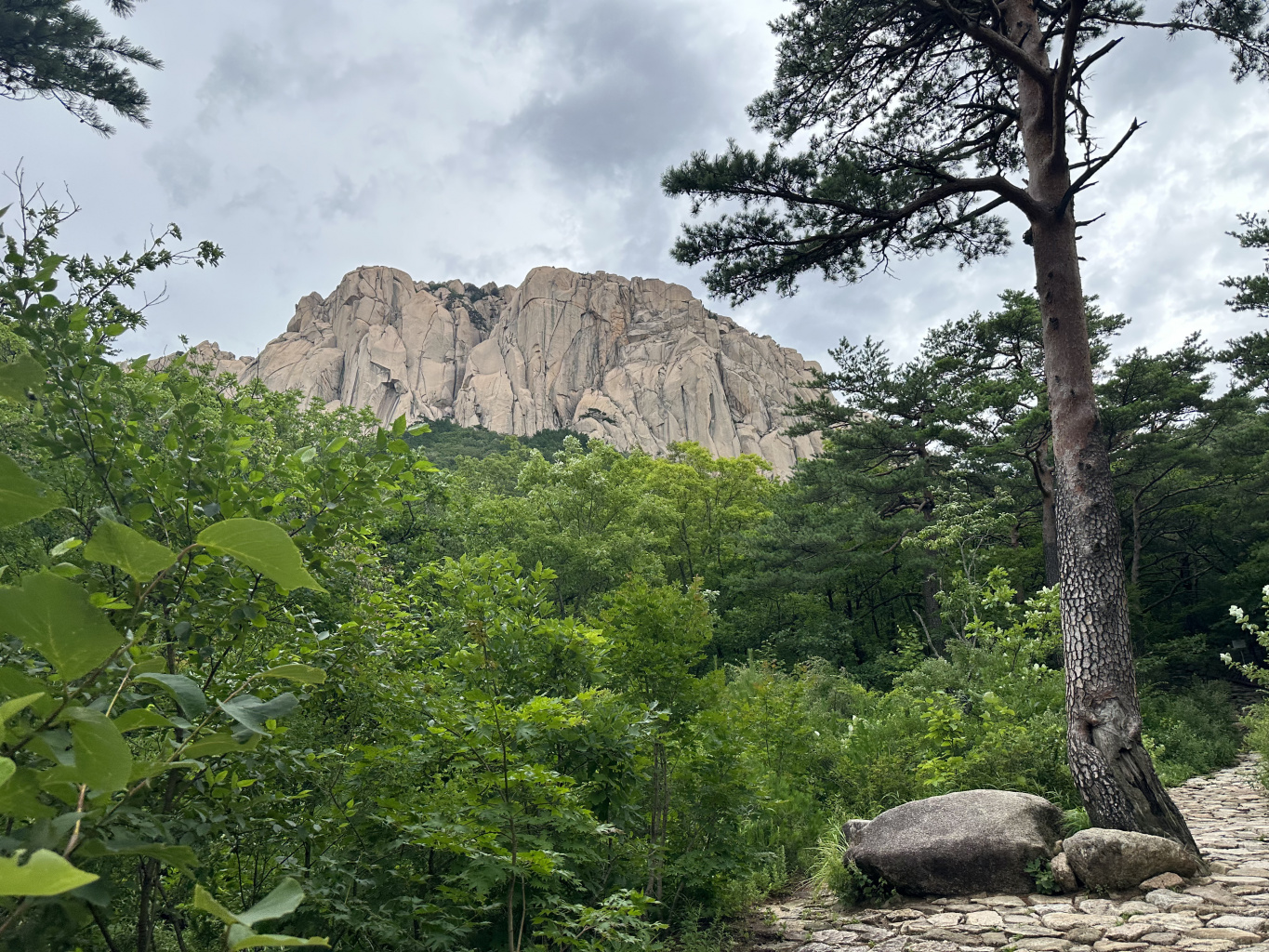
The next day, we went to the Seoraksan National Park again. The weather was even worse - it was raining cats and dogs, so the cable way, of course, was closed again. We decided to turn left to the trail leading to the Biseondae Rock. This trail goes entirely along a rapid mountain river. When it’s raining, the leaves of the trees seemed not just wet, but oily from the water. Every now and then, we saw mushrooms along the way and, despite the rain, butterflies having an unusual body flew around - butterflies in Korea seem to have an elongated tail and a head with a long thin nose, almost like a hummingbird.
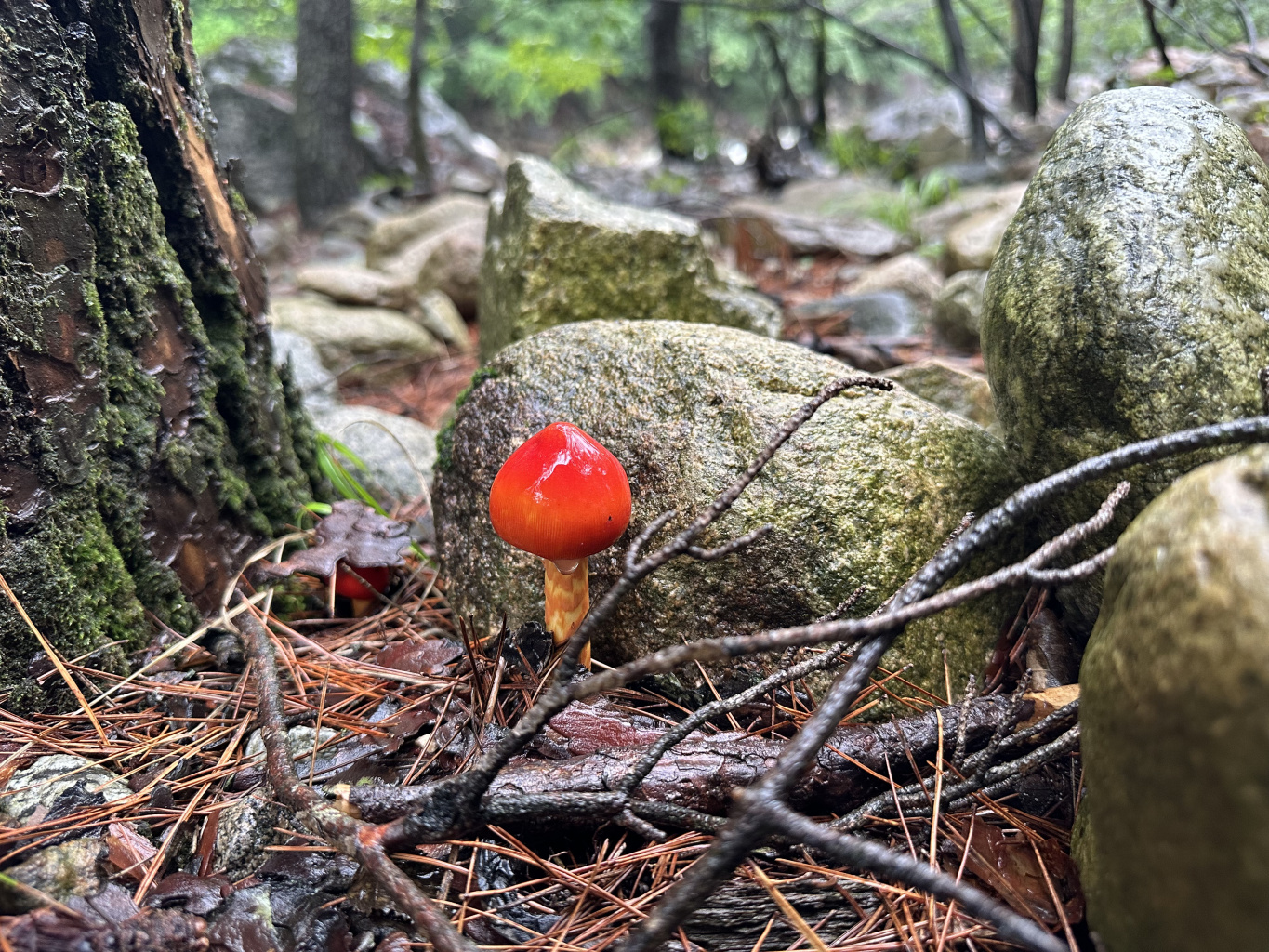
Somewhere in the middle of the way, we encountered an obstacle because the mountain river overflowed its banks and the rocky path was under the water. And although we got soaked to the skin, we still had the heart to overcome the raging river. Soon, the path led us to a bridge with huge stones lying nearby that had inscriptions – in Buddhist hieroglyphs - and the mountains were mantled with ivy.

After the bridge, there was a booth and a lowered barrier boom. We decided that way to the top of the mount was closed due to the rain, because the road was damaged in some places, but it turned out that hiking further along the trail in the summer season is always possible until 3 p.m. (and in the winter season - until 2 p.m.), we were just late. However, this did not upset us because the road itself was incredibly picturesque, especially in the rain.
